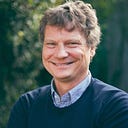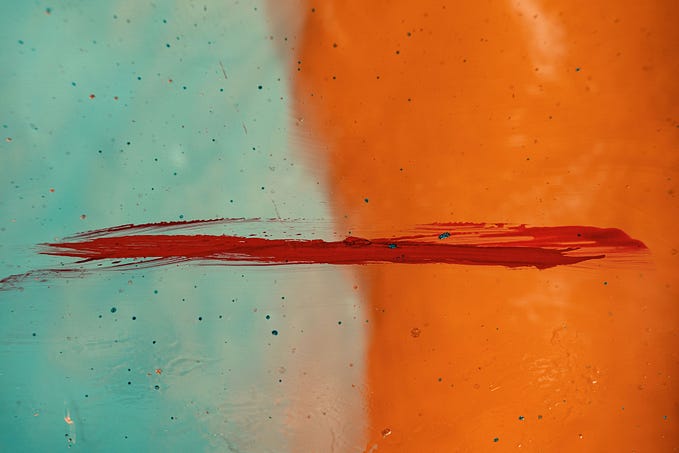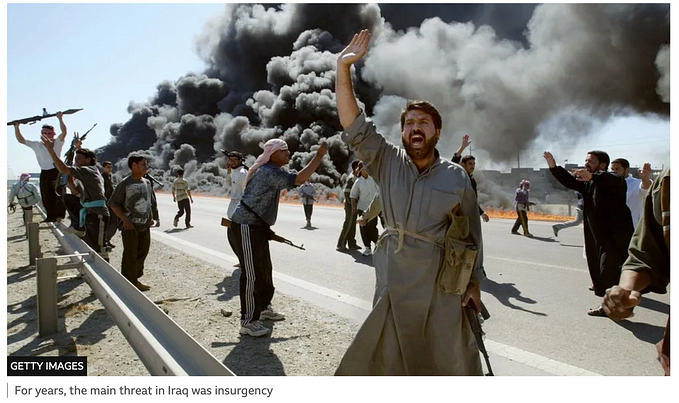Interbeing: Tapping into the force of renewal.
We’re at a crossroads, a pivotal moment in human history. Our actions and omissions in the next 10 to 15 years will cause a shock effect lasting hundreds, if not thousands of years. We are at this Rubicon moment where we need to figure out a new mode of collective action. If we don’t, the future will remember us as the generation that could have done something, but didn’t.
A moment such as this needs a new mindset, one that allows us to navigate through the adjacent possible future stampeding towards us. A bespoke mindset, so to speak.
Humankind needs to develop a capacity, an inner compass, for living, thinking, sense-making, relating, and problem-solving. The search for this inner compass demands long-term orientation and vision.
It is my belief that this new mindset can be achieved and maintained through the notion of regeneration. This regeneration in turn involves the creation of a community of understanding — a commons, a space for mutual belonging where every human being can, to borrow Joanna Macy’s words, exercise power not over but with each other.

But how do we go about achieving this regeneration, this mutuality? How do we cultivate the vital force that will bridge us over into the future while at the same time harnessing all that we have learned from the past and from our troubled present?
The discussion about regeneration
Whenever I reflect upon the type of ancestors we need to be, and the relationship we need to develop with our own vulnerability and helplessness in this momentous age, it is the idea of regeneration that comes to me with the most force.
Regeneration, as Carol Sanford states, is a process that only takes place in living systems — a flow of vitality or developmental pathway that builds sustainable outcomes. Sustainability is not possible without regeneration, and that is why humankind, in its quest for a sustainable future, needs to turn to the patterns of life and nature for a model. Regeneration is, thus, not just an objective but also a consequence.
The notion of regeneration has been widely and painstakingly analyzed by several relevant thinkers, who have established different sets of principles. For example, John Fullerton, a renowned thought leader on regenerative economics, has suggested applying a three-premise approach to the human economy.
I broaden his premises further and apply them to all human systems.
The first premise is that human systems (whether economic, social, cultural, organizational, or political) are living systems.
The second premise is that there are identifiable patterns and principles that describe how all living systems work that have proved sustainable over time.
Lastly, if humankind is to become sustainable over the long run, our systemic design must align itself with these same patterns and principles.
John Fullerton, Bill Reed, Carol Sanford, and Tre’ Cates from Nrythm are among those intellectuals that have proposed different sets of principles. I have covered Fullerton’s principles in several recent articles.
Bill Reed’s approach, on the other hand, is organized around five principles: wholeness, essence, potential, development and reciprocity (or field building). Carol has proposed seven. And so on.
But what if all those patterns and principles, described so eloquently by these thought leaders, were merely their best interpretation of something more transcendent? — something that can only express itself through abstract statements?
What if we are only seeing the play of shadows on a wall?
And, if those patterns are merely shadows, what is the more profound source from which they are reflected — the source outside our current, comprehensive worldview?
These are the questions that have been keeping me awake.
If our challenge is to build a vibrant and self-sustaining system for humankind to thrive in — a system nourishing, involving, and benefiting all sentient beings — then it is only by connecting, our minds and hearts, with the natural force of life itself that we can become regenerative, and therefore sustainable.
As I learned in my recent monastic experience in Plum Village: “The way out is in”. We need to engage in inner work for regenerative action. We need to become the teaching.
Nature knows best
If we are to go beyond and deeper than any individual thinker’s formulation of the regenerative principles, we need to tap into ancient wisdom and connect with the vital force, an act for which Thich Nhat Hanh, founder of the International Plum Village Community of Engaged Buddhism, has coined interbeing. By acknowledging and embracing this wholeness, we generate ripple effects, an all-encompassing harmony that puts us in synchronicity with every form of life.
As Janine Benyus reminds us, “virtually all native cultures that have survived without fouling their nests have acknowledged that nature knows best, and have had the humility to ask the bears and wolves and ravens and redwoods for guidance.”
When delving into these issues — this asking of nature to show us the way — I came across the notion of liyan, which relates to the views that the Yawuru and other Australian aboriginal people have of their wellbeing and to the way they feel about their relationship to their community and the wider world.
While the Western economic model looks to financial security and consumerism as its fundamental measure of wellbeing, liyan is about creating positive energy and being true to ourselves so that our spirits are at peace. As Patrick Dodson, chairman of Yawuru Native Title Holders, explains, it refers to relationships, family, connection, culture, and what gives meaning to people’s lives. “When we feel disrespected or abused,” he explains, “our liyan is bad, which can be insidious and corrosive for both the individual and community. When our liyan is good our wellbeing and everything else is in a good place.”
Whatever source of ancient wisdom we choose to connect to, we will inevitably find that it describes and builds upon an underlying vital force. The Maoris call it maudi, the spirit of wholeness, a dynamic life force and network of interacting relationships. The Andean cosmovision knows it as suma qamaña, the harmonious relationship with all forms of existence. Buddhism calls it dharma, the cosmic law and order.
My invitation to you is to search beyond the patterns and principles offered by the different thinkers and tap into that vital force.
It is, as you will realize, an invitation to reconciliation as a fundamental precondition for regeneration.
Reconciliation through interbeing
Reconciliation is life’s embracing act, an act of love. Active reconciliation is to venture into a land of rediscovery, a collective learning exercise we need to do together, since it has been always together, through a common effort, that we made it as a species to where we are now.
It is only by diving into the deep understanding of our ancestral knowledge, the one that brought us to where we are as a civilization, that we can make sense of (or “sense-make”) the trail to our future.
It is essential for us to understand the perfect interdependence of all patterns and principles — the process of life’s interbeing. In the witty words of (again) Janine Benyus: “Life creates conditions conducive to life.”
And hopefully, once we collectively connect with this vital force, we can start together on the path of inter-becoming.
It is only by embodying the patterns that we can create vital flows.
Dharma is the medicine for healing our torn social, economic, and cultural tissue. Sangha (Community/Commons) is the vessel we need to sail into the future. Community is kinship — because, as the popular song goes, “I’m not gonna make it alone”.
We find ourselves at a critical juncture in our evolution as a species. Embracing the concept of “interbeing,” we recognize that our existence is a loving verb in continuous evolution, a dynamic interplay with the world around us.
This notion of interbeing paves the way for a deeper, more profound understanding: the concept of “inter-becoming.”
“Inter-becoming” is an acknowledgment of our perpetual state of growth and transformation, both as individuals and as a collective. It’s a recognition that our identities, our relationships, and our place in the natural world are not fixed entities but are instead fluid and evolving. We are not just beings in a static state of existence; we are participants in a never-ending process of becoming, shaped by our interactions with each other and the world.
One thing we have learned over long centuries of human thought is that knowledge is relational, and that relational interaction is crucial for the acquisition of knowledge. As novelist E. M. Forster famously wrote, “Only connect the prose and the passion, and both will be exalted, and human love will be seen at its height. Live in fragments no longer.”
Our quest now is to focus on manifesting these different indigenous perspectives into an interconnected tapestry, so as not to “live in fragments” any longer.
We need to build reconciliatory bridges. Ancient wisdom has driven humankind through harsh times and centuries of challenging situations before, and it is that wisdom that can now be our insightful guidance. It is imperative to understand what the elders are expressing at this time — to reconcile with this wisdom. Through a collective effort, we can birth this knowledge into existence.
I am proposing that we create a collective vessel for the reconciliation and re-manifestation of this knowledge. This emergent can then be collectively integrated into a narrative aligned with the “ consciousness” of our times and into a knowledge commons with the collective capacity for sense-making and agency in this complex era. A new language, a new vocabulary, a new narrative.
What to do? Achieving wholeness through connection
This new reconciliatory language I am championing comes from a deep understanding — it is about love, compassion, and trust. This original source is found deeper than and beyond the understanding of the principles.
If words like “love” or “compassion” sound hackneyed, we can reliably turn to Chilean economist Manfred Max-Neef for a more analytical explanation of their meaning — one that it is good to quote at length: “We can [be] guided by our scientific method [and] study, from theological, anthropological, sociological, psychological and even biochemical perspectives, everything related to the human phenomenon called love. The result will be that we will ‘know’ everything it is possible to know about love. But once we have achieved that complete knowledge, sooner or later we will discover that we will never come to understand love unless we fall in love. We will find that knowledge is not the road that leads to understanding, because the harbor of understanding lies on another shore and requires a different navigation. […] Knowledge is not enough, we must learn to reach ‘understanding’ in order to achieve the Completeness of our being and the Completeness of our science. The great challenge is a change of language. […] Neither regeneration nor sustainability can be achieved without a profound change of language. We need a new language that opens the door to understanding — not a language of power and domination, but one that arises from the depths of our self-knowledge, as an inseparable part of a whole that is the cradle of life’s miracle. If we succeed in bringing about such a change, we could experience the satisfaction of having brought about a world worth living in.”
Following love, compassion, empathy, and trust seems a very subjective challenge — or, at best, a difficult aspiration to put into practice. Human history has taught us to doubt that these quintessential values are out there, or even in ourselves. And yet they are the vital force that has carried us this far.
Separation, polarization, and consumption have dulled the practice of delving into our deeper selves. But if we accept that these values are a part of us — a part of our true human essence — then we can relearn how to tap into our souls to recover them and make them the foundations of our future. A new vocabulary, a language, and a narrative of love and care.
Thirsting after our own likeness
I will close this heartfelt and very earnest invitation by reminding you of the poet Percy Shelley’s notions about the relationship between love and the wholeness of all living systems. This man, who died two hundred years ago last July, aged twenty-nine, and who had pioneering ideas about sustainability and environmentalism — for which he suffered contempt and was greatly misunderstood in his own time — defined love as “the bond and the sanction which connects not only man with man, but with everything which exists”. And he went on to refer to: […] “a soul within our own soul that describes a circle around its proper Paradise, which pain and sorrow and evil dare not overleap”.
We are living in fraught times where pain and sorrow and evil seem to be prevalent everywhere, attacking us from all fronts. It is up to us to find the “soul within our own soul” and follow that “bond and sanction” that make us whole. This is what an Englishman born to landed gentry in the late eighteenth century has in common with a Yawuru elder, a Buddhist monk, or a contemporary Chilean philosopher. This is our connection, and therein lies our only hope.
Before You leave!
If you relate to this story, I would greatly appreciate you clicking the 👏button. You can hold it down up to 50 claps and this will help this story get more exposure and this narrative more support. If you feel the calling please reach out privately or leave a comment below
Thanks for your support!








